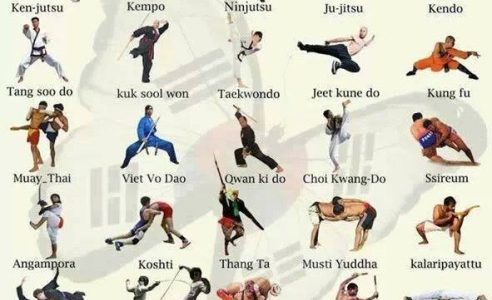The Growth And Historical Context Of Martial Arts Worldwide
The Growth And Historical Context Of Martial Arts Worldwide
Blog Article
Short Article Created By-Kaufman Vick
Martial arts have a remarkable history that extends centuries and continents. You might locate it intriguing how old techniques like Shuai Jiao and Kalaripayattu laid the groundwork for contemporary combat techniques. These disciplines not just highlight physical skills however additionally reflect the societies that birthed them. As visit this site right here discover their development, think about just how globalization has changed these traditional forms into crossbreed styles. What influences do you think have shaped today's martial arts landscape?
Ancient Martial arts: The Structures of Battle
As you explore the world of ancient martial arts, you'll discover the abundant structures that formed combat strategies throughout cultures. Early practices focused on Self-Defense and survival, typically incorporating strikes, grappling, and weaponry.
In martial arts meaning , for instance, strategies like Shuai Jiao emphasized throws and joint locks, while India's Kalaripayattu showcased dexterity and liquid movement. Japanese samurai established Kenjutsu, a refined swordsmanship that highlighted self-control and approach.
These martial arts served not just for battle however also as a means of individual growth, instilling worths like regard and determination. The mixing of these techniques gradually prepared for the diverse martial arts you see today, each reflecting the unique philosophies and demands of its society.
The Social Influence on Martial Arts Development
While martial arts often reflect the useful demands of a culture, they likewise symbolize the cultural worths and ideas of their origins. When you check out different martial arts, you'll discover just how they're influenced by religious beliefs, viewpoint, and social norms.
For instance, the emphasis on respect and discipline in Japanese martial arts stems from Zen Buddhism and samurai culture. On the other hand, Brazilian Jiu-Jitsu advertises adaptability and approach, formed by the requirement for efficiency in a varied, modern setting.
You might locate that the routines, attires, and training techniques reflect an area's history and identity. By comprehending these social influences, you strengthen your recognition of martial arts and their function in shaping human experiences across the globe.
Modern Adaptations and the Globalization of Martial arts
Martial arts have actually changed dramatically in current years, adapting to contemporary society and international impacts. You'll see that traditional kinds have mixed with modern-day strategies, creating hybrid styles like MMA. These adjustments deal with diverse audiences, making martial arts available and enticing globally.
With the increase of social networks and digital platforms, you can discover tutorials and competitors from all corners of the globe, damaging geographical obstacles. This globalization has caused a shared appreciation for numerous techniques, from Brazilian Jiu-Jitsu to Taekwondo.
As you engage with these arts, you'll realize they're not nearly battle; they advertise health and fitness, self-control, and psychological well-being.
Inevitably, contemporary adjustments have improved the martial arts landscape, making it a vibrant and advancing practice.
Final thought
In exploring the history and advancement of martial arts, you reveal a remarkable mix of strategies, cultures, and philosophies. From ancient disciplines like Shuai Jiao and Kalaripayattu to the modern-day adaptability seen in mixed martial arts, martial arts mirror humankind's mission for Self-Defense and individual growth. As you involve with these practices, you not just obtain abilities yet additionally a deeper recognition for the diverse customs that form our world today. So, proceed your journey and accept the art of fight!
